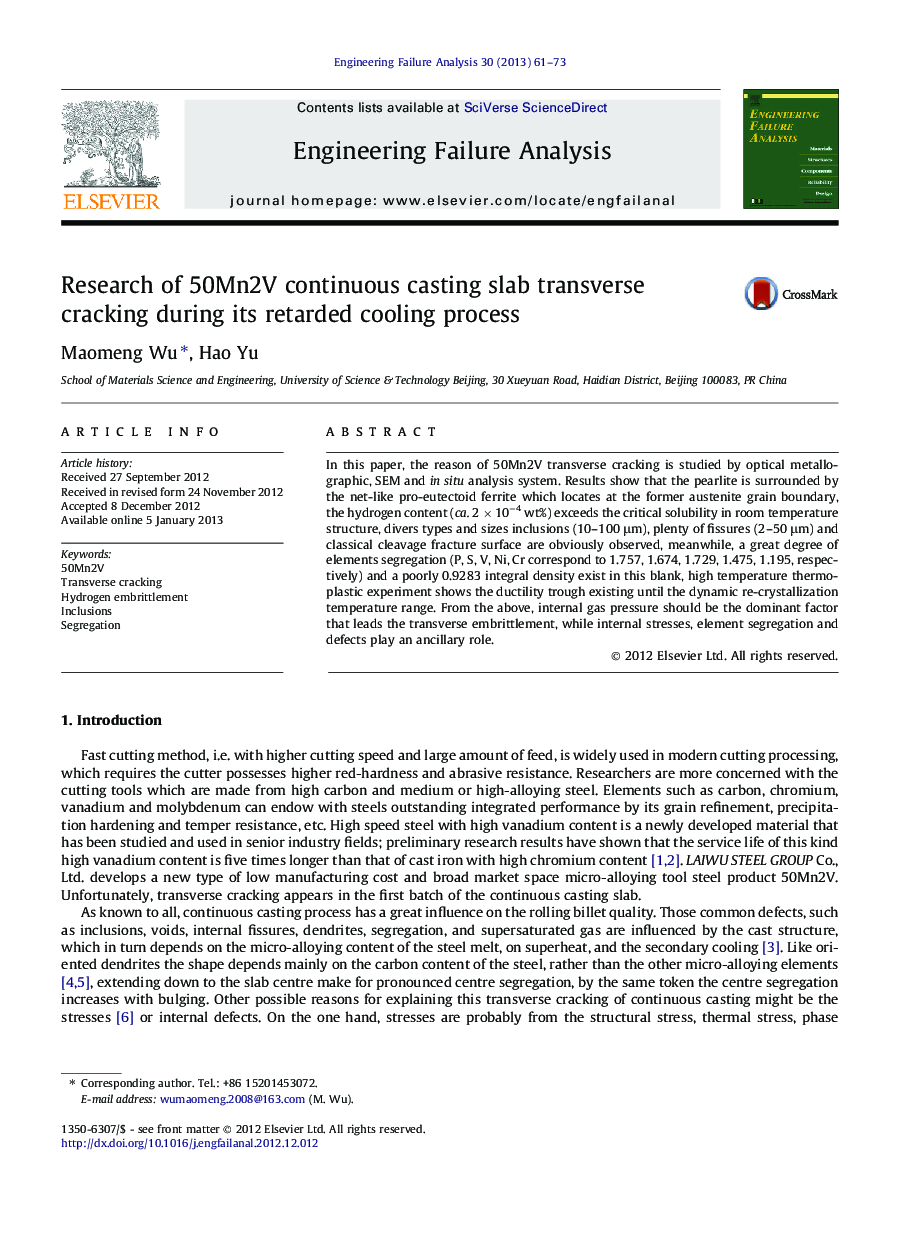| Article ID | Journal | Published Year | Pages | File Type |
|---|---|---|---|---|
| 768627 | Engineering Failure Analysis | 2013 | 13 Pages |
In this paper, the reason of 50Mn2V transverse cracking is studied by optical metallographic, SEM and in situ analysis system. Results show that the pearlite is surrounded by the net-like pro-eutectoid ferrite which locates at the former austenite grain boundary, the hydrogen content (ca. 2 × 10−4 wt%) exceeds the critical solubility in room temperature structure, divers types and sizes inclusions (10–100 μm), plenty of fissures (2–50 μm) and classical cleavage fracture surface are obviously observed, meanwhile, a great degree of elements segregation (P, S, V, Ni, Cr correspond to 1.757, 1.674, 1.729, 1.475, 1.195, respectively) and a poorly 0.9283 integral density exist in this blank, high temperature thermoplastic experiment shows the ductility trough existing until the dynamic re-crystallization temperature range. From the above, internal gas pressure should be the dominant factor that leads the transverse embrittlement, while internal stresses, element segregation and defects play an ancillary role.
Graphical abstractFigure optionsDownload full-size imageDownload as PowerPoint slideHighlights► The pearlite is surrounded by the net-like pro-eutectoid ferrite which locates at the former austenite grain boundary. ► The hydrogen content (ca. 2 × 10−4 wt%) exceeds the critical solubility in room temperature structure. ► Divers types and sizes inclusions (10–100 μm), plenty of fissures (2–50 μm) and classical cleavage fracture surface are obviously observed. ► A great degree of elements segregation and a poorly 0.9283 integral density exist in this blank. ► Ductility trough exists below the dynamic re-crystallization temperature range.
